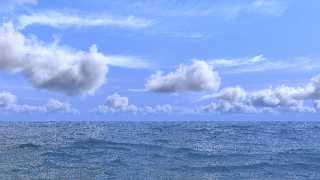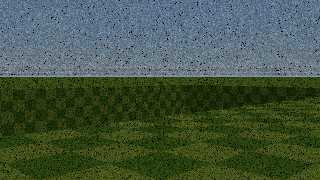 |
 |
|
 |
|
 |
|  |
|  |
|
 |
|
 |
|  |
|  |
|
 |
Thanks, Thomas, John... see if these cirrus look better.
--
jaime
Post a reply to this message
Attachments:
Download 'ocean-22c.jpg' (142 KB)
Preview of image 'ocean-22c.jpg'

|
 |
|  |
|  |
|
 |
|
 |
|  |
|  |
|
 |
On 4-5-2016 7:53, Jaime Vives Piqueres wrote:
> Thanks, Thomas, John... see if these cirrus look better.
>
The wizard did it again! :-)
Yes, that is much, much better.
--
Thomas
Post a reply to this message
|
 |
|  |
|  |
|
 |
|
 |
|  |
|  |
|
 |
On 04/05/16 06:53, Jaime Vives Piqueres wrote:
> Thanks, Thomas, John... see if these cirrus look better.
>
> --
> jaime
You're not supposed to use a camera ;-)
Much better. Good work.
John
--
Protect the Earth
It was not given to you by your parents
You hold it in trust for your children
Post a reply to this message
|
 |
|  |
|  |
|
 |
|
 |
|  |
|  |
|
 |
Am 04.05.2016 um 07:53 schrieb Jaime Vives Piqueres:
> Thanks, Thomas, John... see if these cirrus look better.
Something's still odd about this. Can't put my finger on it though.
Maybe thick low-hanging cumulus together with cirrus is a weather
situation we don't normally see?
Maybe there's a 3D-component to your cirrus clouds, whereas in reality
they seem to be quite flat?
Post a reply to this message
|
 |
|  |
|  |
|
 |
|
 |
|  |
|  |
|
 |
Le 16-05-04 01:53, Jaime Vives Piqueres a écrit :
> Thanks, Thomas, John... see if these cirrus look better.
>
> --
> jaime
Usualy, cirrus clouds looks rather flat due to their altitude and their
small vertical extent.
My take would be to use a plane or very large, somewhat flattened,
sphere and use an image_map. Just be sure to set that to no_shadow.
Anyway, normaly, cirrus don't cast noticeable shadows as they are so thin.
Personaly, I'v seen some cases where you have cirrus above some other
clouds formations. Even cirrus above other cirrus, in this case, it's
usualy strato-cirrus above cirrus.
Alain
Post a reply to this message
|
 |
|  |
|  |
|
 |
|
 |
|  |
|  |
|
 |
El 04/05/16 a las 14:07, clipka escribió:
> Something's still odd about this. Can't put my finger on it though.
>
> Maybe thick low-hanging cumulus together with cirrus is a weather
> situation we don't normally see?
Well, it's not really that strange to have cirrus over cumulus, tough
most of the time there is a clear sky over them.
> Maybe there's a 3D-component to your cirrus clouds, whereas in
> reality they seem to be quite flat?
The media shell is very thin, so I think that's not the problem. I
think it was the fact that I forgot to map them spherically, so they
don't look to be as high as they should.
--
jaime
Post a reply to this message
|
 |
|  |
|  |
|
 |
|
 |
|  |
|  |
|
 |
El 04/05/16 a las 18:30, Alain escribió:
> Usualy, cirrus clouds looks rather flat due to their altitude and
> their small vertical extent. My take would be to use a plane or very
> large, somewhat flattened, sphere and use an image_map. Just be sure
> to set that to no_shadow. Anyway, normaly, cirrus don't cast
> noticeable shadows as they are so thin.
I tried first the image map, but it was hard to match the lighting on
the photo with the sun on the scene, so I opted to use the photo as a
pattern for scattering media.
> Personaly, I'v seen some cases where you have cirrus above some other
> clouds formations.
Me too...
--
jaime
Post a reply to this message
|
 |
|  |
|  |
|
 |
|
 |
|  |
|  |
|
 |
On 4/28/2016 10:52 AM, Simon J. Cambridge wrote:
> Jaime Vives Piqueres <jai### [at] ignorancia org> wrote:
>>> I ended up using a single containing object (box or plane) and then filling it
>>> with a skewed y-gradient density to get a flat bottom and then adding a mixture
>>> of wrinkles, bozo and crackle (form<1, 0, 0>) to try to approximate fluffy tops.
>>> Some of my images over at www.landofthefirst.com were created using this. I am
>>> still not 100% happy with them.
>>
>> The ones at Othil Homtoh look very nice...
>>
>> --
>> jaime
>
> Here is the code:
>
> #macro SkyShell(minAlt, maxAlt, Int)
> difference
> {
> sphere {<0, 0, 0> 1000000+maxAlt}
> sphere {<0, 0, 0> 1000000+minAlt}
> hollow
> texture {pigment {color rgbf 1}}
> interior {Int}
> translate <0, -1000000, 0>
> }
> #end
>
> SkyShell(4000, 5000,
> interior {
> media {
> method 3
> samples 20
> scattering {2, color rgb 0.0075 extinction 1}
> density
> {
> wrinkles
> scale <4000, 1000, 4000>
> warp { turbulence 2 }
> lambda 4
> color_map
> {
> [0.00 color rgb 1.0]
> [0.50 color rgb 0.8]
> [0.55 color rgb 0.0]
> [1.00 color rgb 0.0]
> }
> translate <-4000, 0, -1000>
> }
> density
> {
> gradient y
> scale 1000
> color_map
> {
> [0.0 color rgb 0.00]
> [0.4 color rgb 1.00]
> [0.9 color rgb 1.00]
> [1.0 color rgb 0.00]
> }
> }
> }
> }
> )
>
> I lied. It was concentric spheres!
>
> And nice solution for the artifacts! One to remember.
>
>
>
>
I am having trouble adapting this code. Here's what I have:
#declare lego_units = 20; // LDU per foot
#declare earth_radius = 20900000 * lego_units;
#declare earth_circum = floor(2 * pi * earth_radius / 640) * 640;
#declare earth_radius = earth_circum/2/pi;
#declare cloud_min_radius = 6000 * lego_units;
#declare cloud_max_radius = 9000 * lego_units;
#local inner_radius = earth_radius + cloud_min_radius;
#local outer_radius = earth_radius + cloud_max_radius;
#local bound_radius = sin(acos(earth_radius/outer_radius)) * outer_radius;
#local cloud_scale = 1;
#local cloud_media = media
{
method 3
samples 20
scattering {2, color rgb 0.0075 extinction 1}
density
{
wrinkles
scale outer_radius * 300 * <1,1/4,1>
warp { turbulence 2 }
lambda 4
color_map
{
[0.00 color rgb 1.0]
[0.50 color rgb 0.8]
[0.55 color rgb 0.0]
[1.00 color rgb 0.0]
}
}
density
{
gradient y
scale (cloud_max_radius - cloud_min_radius)
color_map
{
[0.0 color rgb 0.00]
[0.4 color rgb 1.00]
[0.9 color rgb 1.00]
[1.0 color rgb 0.00]
}
}
scale 1
}
#local cloud_sphere = difference
{
sphere {0, outer_radius}
sphere {0, inner_radius}
// bounded_by {cylinder {<0,-earth_radius,0,>, <0,-outer_radius,0,>,
bound_radius}}
hollow
material
{
texture {pigment {color srgbft <1,1,1,0,1>}}
interior
{
media {cloud_media}
}
scale cloud_scale
}
translate +y * earth_radius
}
object {cloud_sphere}
However, the effect is very grainy and dark. If I continue to scale it
upward, it turns nearly black. If I scale it downward, I can't see the
clouds any more. Does anyone know what I am doing wrong? Thanks.
Mike org> wrote:
>>> I ended up using a single containing object (box or plane) and then filling it
>>> with a skewed y-gradient density to get a flat bottom and then adding a mixture
>>> of wrinkles, bozo and crackle (form<1, 0, 0>) to try to approximate fluffy tops.
>>> Some of my images over at www.landofthefirst.com were created using this. I am
>>> still not 100% happy with them.
>>
>> The ones at Othil Homtoh look very nice...
>>
>> --
>> jaime
>
> Here is the code:
>
> #macro SkyShell(minAlt, maxAlt, Int)
> difference
> {
> sphere {<0, 0, 0> 1000000+maxAlt}
> sphere {<0, 0, 0> 1000000+minAlt}
> hollow
> texture {pigment {color rgbf 1}}
> interior {Int}
> translate <0, -1000000, 0>
> }
> #end
>
> SkyShell(4000, 5000,
> interior {
> media {
> method 3
> samples 20
> scattering {2, color rgb 0.0075 extinction 1}
> density
> {
> wrinkles
> scale <4000, 1000, 4000>
> warp { turbulence 2 }
> lambda 4
> color_map
> {
> [0.00 color rgb 1.0]
> [0.50 color rgb 0.8]
> [0.55 color rgb 0.0]
> [1.00 color rgb 0.0]
> }
> translate <-4000, 0, -1000>
> }
> density
> {
> gradient y
> scale 1000
> color_map
> {
> [0.0 color rgb 0.00]
> [0.4 color rgb 1.00]
> [0.9 color rgb 1.00]
> [1.0 color rgb 0.00]
> }
> }
> }
> }
> )
>
> I lied. It was concentric spheres!
>
> And nice solution for the artifacts! One to remember.
>
>
>
>
I am having trouble adapting this code. Here's what I have:
#declare lego_units = 20; // LDU per foot
#declare earth_radius = 20900000 * lego_units;
#declare earth_circum = floor(2 * pi * earth_radius / 640) * 640;
#declare earth_radius = earth_circum/2/pi;
#declare cloud_min_radius = 6000 * lego_units;
#declare cloud_max_radius = 9000 * lego_units;
#local inner_radius = earth_radius + cloud_min_radius;
#local outer_radius = earth_radius + cloud_max_radius;
#local bound_radius = sin(acos(earth_radius/outer_radius)) * outer_radius;
#local cloud_scale = 1;
#local cloud_media = media
{
method 3
samples 20
scattering {2, color rgb 0.0075 extinction 1}
density
{
wrinkles
scale outer_radius * 300 * <1,1/4,1>
warp { turbulence 2 }
lambda 4
color_map
{
[0.00 color rgb 1.0]
[0.50 color rgb 0.8]
[0.55 color rgb 0.0]
[1.00 color rgb 0.0]
}
}
density
{
gradient y
scale (cloud_max_radius - cloud_min_radius)
color_map
{
[0.0 color rgb 0.00]
[0.4 color rgb 1.00]
[0.9 color rgb 1.00]
[1.0 color rgb 0.00]
}
}
scale 1
}
#local cloud_sphere = difference
{
sphere {0, outer_radius}
sphere {0, inner_radius}
// bounded_by {cylinder {<0,-earth_radius,0,>, <0,-outer_radius,0,>,
bound_radius}}
hollow
material
{
texture {pigment {color srgbft <1,1,1,0,1>}}
interior
{
media {cloud_media}
}
scale cloud_scale
}
translate +y * earth_radius
}
object {cloud_sphere}
However, the effect is very grainy and dark. If I continue to scale it
upward, it turns nearly black. If I scale it downward, I can't see the
clouds any more. Does anyone know what I am doing wrong? Thanks.
Mike
Post a reply to this message
Attachments:
Download 'wrapper_townview_normal.png' (1118 KB)
Preview of image 'wrapper_townview_normal.png'

|
 |
|  |
|  |
|
 |
|
 |
|  |
|  |
|
 |
On 2/22/2018 3:56 PM, Mike Horvath wrote:
> However, the effect is very grainy and dark. If I continue to scale it
> upward, it turns nearly black. If I scale it downward, I can't see the
> clouds any more. Does anyone know what I am doing wrong? Thanks.
>
>
> Mike
Never mind. I think I have a handle on it.
Mike
Post a reply to this message
|
 |
|  |
|  |
|
 |
|
 |
|  |
|  |
|
 |
On 5/3/2016 6:38 AM, Jaime Vives Piqueres wrote:
> Latest development:
>
> + new and improved cumulus shapes using trace() over a rough base shape.
> There are 10 different clouds using 500 blob components each one.
>
> + added cirrus layer using a panoramic photograph of real clouds as
> pattern for the media density (had to "cheat" because I could not find
> any convincing pattern).
>
> --
> jaime
Does anyone have any actual code for these poofy clouds? They look so nice!
Mike
Post a reply to this message
|
 |
|  |
|  |
|
 |
|
 |
|  |
|
 |




![]()